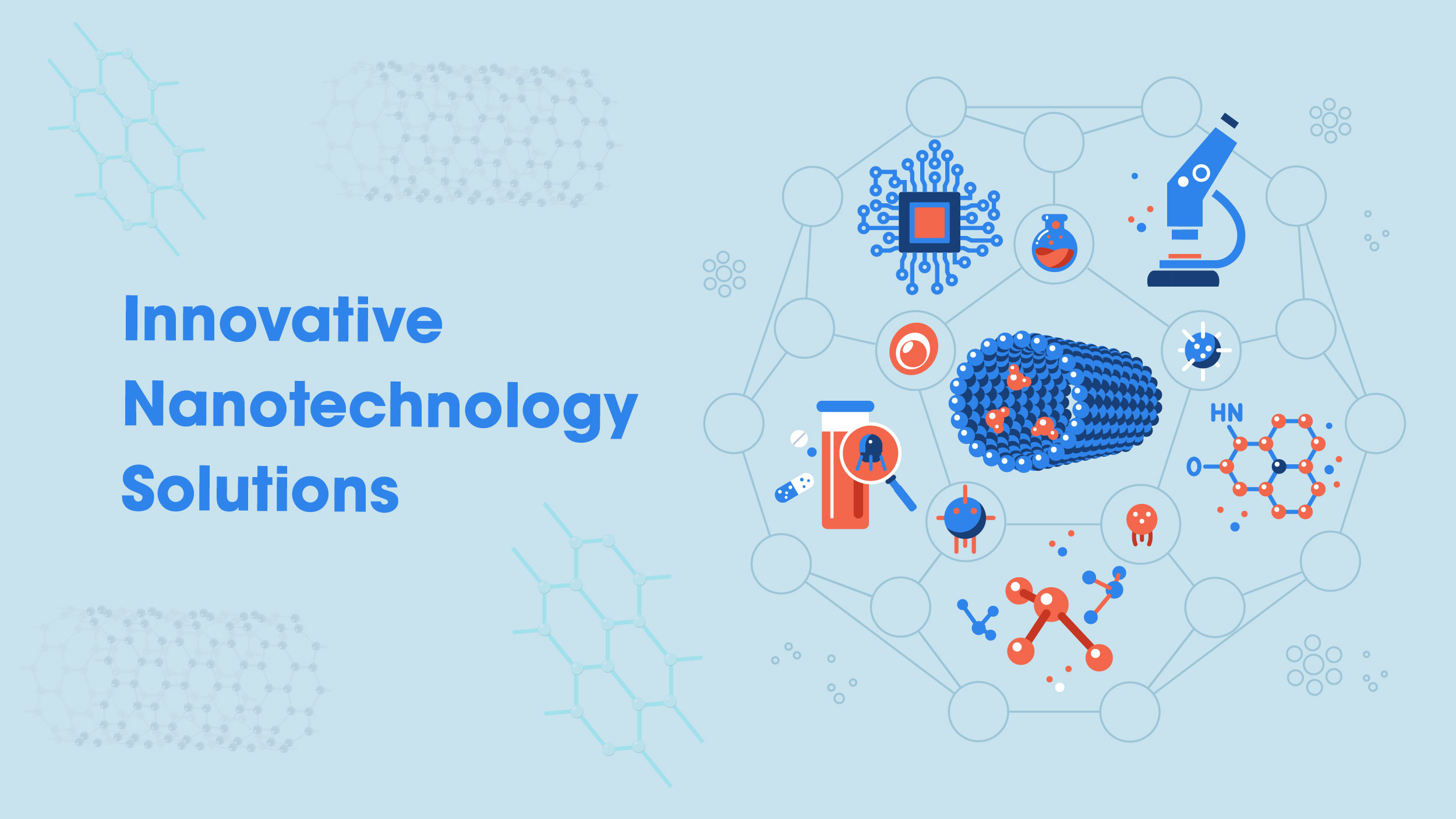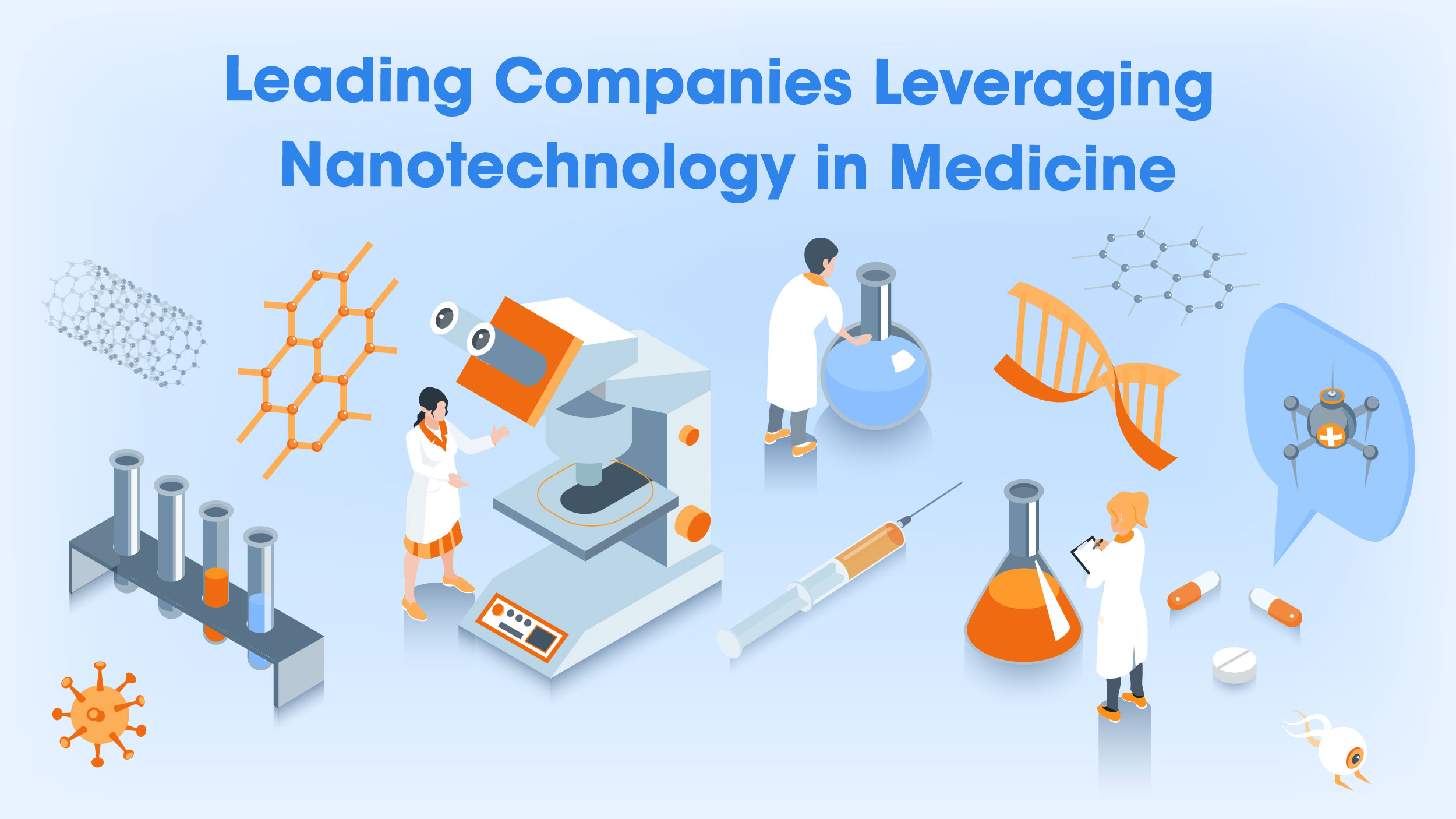In the dynamic landscape of modern medicine, one revolutionary technology is poised to reshape the way we approach diagnostics, treatment, and drug delivery – nanotechnology. Consumer electronics, textile manufacturing, cosmetics, and other industries have already witnessed radical changes as a result of the development of new materials and processes at the nanoscale.
In this blog, we will delve into the intricate world of “Nanotechnology in Medicine”, exploring its remarkable applications, transformative innovations, and case studies of pioneering companies at the forefront of this paradigm shift.
Decoding the Nanoscale Marvels
Nanotechnology, defined as the manipulation of matter at the nanoscale (typically ranging from 1 to 100 nanometers), has opened doors to novel possibilities in the field of medicine. At this scale, materials exhibit unique properties and behaviors that can be harnessed for precise drug delivery, targeted imaging, and innovative diagnostic tools.
What was once regarded as fiction has quickly become a scientific marvel, saving millions of lives across the globe.
Nanoparticles in Drug Delivery
The evolution of drug delivery has taken a quantum leap with the integration of nanotechnology. Nanoparticles, such as liposomes and polymer-based carriers, enable the controlled release of therapeutic agents, ensuring precise dosing and minimizing side effects. According to recent statistics, the global market for nanotechnology-based drug delivery is projected to reach $1.2 billion by 2025, reflecting the growing demand for safer and more effective treatments.
Innovative Nanotechnology Solutions

Now that we have a fair idea about nanotechnology, let’s have a look at how nanotechnology in medicine is revolutionizing the healthcare sphere.
● Cancer Treatment Breakthroughs
Nanotechnology has ushered in a new era in cancer treatment by providing innovative strategies for targeted therapies. Nanoparticles loaded with chemotherapy drugs can be engineered to selectively accumulate in tumor tissues, reducing damage to healthy cells. Notably, Abraxane, a nanoparticle-bound paclitaxel, has shown improved efficacy and reduced toxicity in treating breast, lung, and pancreatic cancers. This breakthrough has led to increased survival rates and enhanced patient outcomes.
While these advances are monumental in the field of healthcare, this is just the beginning of how nanotechnology in medicine is going to shape future generations.
● Diagnostic Precision
The fusion of nanotechnology and diagnostics has given rise to a range of advanced tools for early disease detection. Quantum dots and nanoscale semiconductors are being employed as fluorescent probes for high-resolution imaging. This enables early detection of diseases like Alzheimer’s and Parkinson’s through precise visualization of cellular and molecular changes. These diagnostic tools are transforming the healthcare landscape by facilitating timely interventions and personalized treatment plans.
● Smart Pills and Nanobots
Smart pills and nanobots are emerging technologies that have the potential to revolutionize nanotechnology in medicine.
Misdiagnosis is a major problem that can lead to serious health consequences, nearly killing 40,000 to 80,000 patients annually. Traditional diagnostic tests can be expensive, inconvenient, and inaccurate. Smart pills and nanobots offer a new way to diagnose diseases that is more accurate, affordable, and convenient.
Smart pills, once ingested by patients, facilitate the collection of data about their health, such as blood sugar levels, heart rate, and body temperature. This data can be transmitted to a doctor or other healthcare providers for analysis. Nanobots are even smaller than smart pills and can be injected into the bloodstream. Nanobots can travel to specific parts of the body and collect data about the health of that particular organ.
Even though smart pills and nanobots are still in the nascent stages of development, they have the potential to make a major impact on the way we diagnose diseases. These technologies could make it possible to diagnose diseases earlier and more accurately, which could lead to better treatment outcomes and save lives.
Nanotechnology in medicine is being used to develop new drug-delivery agents that can target specific diseases and deliver medication with more precision.
One example of this is the development of origami nanorobots at Arizona State University. These nanorobots are made of a flat sheet of synthetic DNA that is coated in a blood-clotting enzyme. The nanorobot can be folded into various shapes and programmed to seek out tumor cells. Once it attaches to a tumor cell, the nanorobot injects the enzyme, which then starves the tumor cell of the blood it needs to survive. This approach to cancer treatment has the potential to be more effective and less harmful to healthy tissue than traditional chemotherapy.
According to a study published in the journal Nature Nanotechnology, up to 50% of patients with chronic diseases fail to take their medication as prescribed. This can lead to serious health consequences, including hospitalization and even death. Nanotechnologies offer a new way to improve medication adherence by delivering medication more precisely and automatically.
Leading Companies Leveraging Nanotechnology in Medicine

1. BIND Therapeutics (Now part of Pfizer)
BIND Therapeutics pioneered the development of Accurins, a unique class of nanoparticle-drug conjugates designed for targeted drug delivery. The company’s innovative approach led to the creation of BIND-014, a promising nanoparticle-based therapy for various cancer types. By delivering docetaxel directly to tumor cells, BIND-014 demonstrated enhanced efficacy in clinical trials while minimizing adverse effects.
2. MagForce AG
MagForce AG, a trailblazing medical technology company, introduced NanoTherm therapy for the treatment of brain tumors. This innovative approach employs magnetic nanoparticles coated with amino silane to create a hyperthermic effect within the tumor upon exposure to an alternating magnetic field. The localized heat destroys cancer cells while sparing healthy tissue, offering a groundbreaking alternative to traditional treatment modalities.
The Road Ahead: Limitless Potential
The amalgamation of nanotechnology and medicine continues to unravel new opportunities that were once deemed unimaginable. The convergence of disciplines such as biology, chemistry, and engineering is fostering groundbreaking research and spurring innovative collaborations. From developing smart drug delivery systems that respond to physiological cues to engineering nanobots for precise surgical procedures, the potential applications of nanotechnology in medicine are limitless.
Final Verdict
In the dynamic world of medical innovation, few forces hold as much potential as nanotechnology. Its integration into the medical field has ushered in a new era of precision, personalization, and effectiveness. As the industry continues to evolve, the collaborations between visionary companies and dedicated researchers will undoubtedly yield more ingenious applications that could potentially redefine healthcare as we know it. From drug delivery to cancer treatment and diagnostic tools, the integration of nanotechnology in medicine will undoubtedly impact the generations to come.




